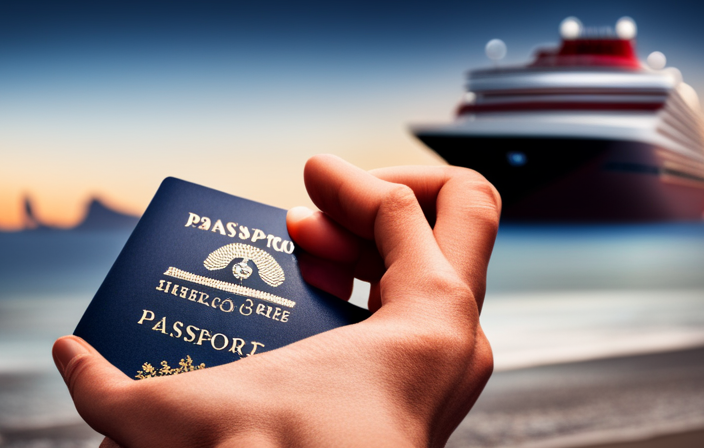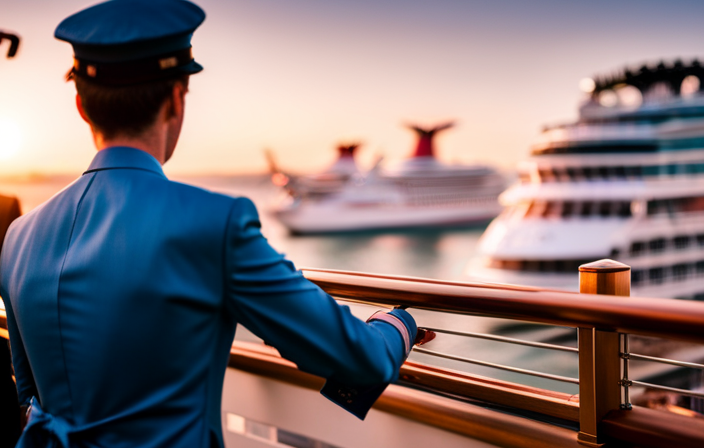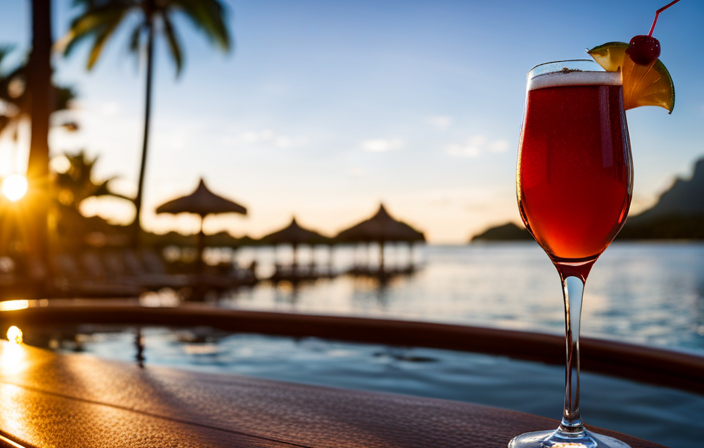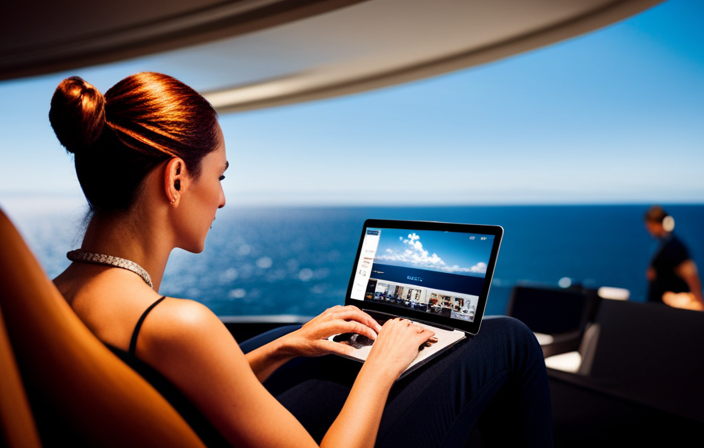Onboard Experience
How Long Does Swaying Last After a Cruise

The sensation of continuing to sway even after disembarking from a cruise has always captivated my interest, notably due to the duration this feeling can last. As someone who frequently goes on cruises, I have encountered this unsettling sensation myself. Consequently, I decided to delve into the scientific reasons behind it to uncover the truth.
In this article, we’ll explore the factors that affect the duration of swaying, common symptoms to look out for, and practical tips to minimize its impact. Get ready to uncover the secrets of post-cruise swaying and how to conquer it!
Key Takeaways
- Post-cruise swaying is caused by disruption to the vestibular system in the inner ear.
- The swaying sensation can last for hours or even days.
- There are no specific medical treatments for post-cruise swaying, but over-the-counter motion sickness medication can help alleviate symptoms.
- Engaging in relaxation techniques, stabilizing exercises, and rehydrating the body can help minimize and cope with post-cruise swaying.
The Science Behind Post-Cruise Swaying
You might be wondering why you still feel like you’re swaying after a cruise. Well, the answer lies in the complex workings of our vestibular system.
This system, located in our inner ear, is responsible for maintaining our sense of balance. When we’re on a cruise, the constant motion can disrupt the delicate equilibrium of our vestibular system. This disruption can lead to a condition known as post-cruise swaying, where we continue to feel like we’re moving even after the cruise has ended.
While this sensation usually subsides on its own within a few days, for some individuals with underlying vestibular system disorders, it can persist for longer periods of time. Treatment options for post-cruise swaying vary depending on the severity of the symptoms, ranging from vestibular rehabilitation exercises to medications that help alleviate the dizziness.
Understanding the body’s balance system is crucial in managing and finding appropriate treatment for post-cruise swaying.
Understanding the Body’s Balance System
Motion sickness prevention and understanding the function of the vestibular system are crucial in maintaining our body’s balance.
The vestibular system, located in the inner ear, plays a vital role in detecting motion and providing us with a sense of equilibrium.
Motion Sickness Prevention
If you’re prone to motion sickness, there are ways to prevent it while on a cruise. As someone who has experienced motion sickness in the past, I’ve learned a few remedies and natural ways to prevent it. Here are four strategies that have worked for me:
-
Ginger: Ginger has long been known for its anti-nausea properties. Whether you take ginger capsules or sip on ginger tea, it can help calm your stomach and reduce the likelihood of motion sickness.
-
Acupressure wristbands: These wristbands apply pressure to specific points on your wrists that are believed to alleviate nausea and vomiting. They are a non-invasive and drug-free option to consider.
-
Fresh air: Sometimes, simply stepping outside and getting some fresh air can make a big difference. The fresh breeze can help distract your senses and reduce the feeling of motion sickness.
-
Choose your cabin wisely: If you’re prone to motion sickness, it’s best to pick a cabin with less movement. Opt for a mid-ship cabin on a lower deck, as these tend to experience less rocking and swaying.
By taking these preventative measures, you can enjoy your cruise without the discomfort of motion sickness.
Now, let’s delve into the fascinating world of the vestibular system and how it functions.
Vestibular System Function
The vestibular system, located in the inner ear, helps maintain balance and spatial orientation. It consists of structures like the semicircular canals and otolith organs. When the head moves, the fluid inside these structures moves too, sending signals to the brain about the body’s position. However, disorders like vestibular neuritis or Ménière’s disease can affect the vestibular system, causing dizziness and balance issues. Treatment may involve medications, physical therapy, and lifestyle changes. Understanding the vestibular system is crucial for diagnosing and managing these conditions.
Now, let’s discuss the factors that can affect the duration of swaying after a cruise.
Factors Affecting the Duration of Swaying
When it comes to motion sickness prevention, there are several factors to consider.
One key point is the size of the ship you are traveling on. Larger ships tend to have more stability and less motion, making them a better choice for those prone to motion sickness.
Additionally, there are various measures you can take to prevent motion sickness, such as taking medication, using acupressure wristbands, or keeping a steady gaze on the horizon.
Motion Sickness Prevention
Motion sickness can be prevented by taking over-the-counter medications before boarding the cruise ship. There are also several motion sickness remedies and natural ways to prevent motion sickness that can be effective. Here are some options to consider:
-
Medications:
-
Over-the-counter antihistamines like Dramamine or Bonine can help reduce symptoms of motion sickness.
-
Prescription medications like scopolamine patches may be recommended for those prone to severe motion sickness.
-
Natural remedies:
-
Ginger has been found to alleviate nausea and vomiting associated with motion sickness.
-
Acupressure wristbands can provide relief by applying pressure to specific points on the wrist.
By taking these steps, you can significantly reduce the chances of experiencing motion sickness during your cruise.
Now let’s explore how the size of the ship impacts the duration of swaying.
Ship Size Impact
Exploring ship size impact, the larger the ship, the more stable it tends to be in terms of swaying. When comparing ship sizes, it is important to consider the impact on passengers’ comfort. Larger ships have more stability due to their size and weight, which helps to reduce the amount of swaying experienced by passengers. This can make a significant difference in the overall comfort level during a cruise. To illustrate this, let’s compare the stability of different ship sizes in the table below:
| Ship Size | Level of Stability |
|---|---|
| Small | Moderate |
| Medium | Good |
| Large | Excellent |
As we can see, the larger the ship, the higher the level of stability. This means that passengers on larger ships are less likely to experience excessive swaying, resulting in a more comfortable cruise experience. Moving forward, let’s explore the common symptoms of post-cruise swaying.
Common Symptoms of Post-Cruise Swaying
One of the common symptoms of post-cruise swaying is feeling off-balance. It’s a sensation that many people experience after being on a cruise ship for an extended period of time. Personally, I’ve had my fair share of swaying after disembarking from a cruise. It can be quite disorienting and make simple tasks like walking or standing difficult.
In some cases, the swaying sensation can last for a few hours or even a few days. While there are no specific medical treatments for post-cruise swaying, there are a few things that can help alleviate the symptoms. These include taking over-the-counter motion sickness medication, practicing relaxation techniques such as deep breathing or meditation, and avoiding sudden movements or activities that may exacerbate the swaying sensation.
Transitioning into the next section, let’s explore some tips for minimizing swaying after a cruise.
Tips for Minimizing Swaying After a Cruise
After a cruise, it’s not uncommon to experience dizziness and a lingering feeling of swaying. Combatting post-cruise dizziness can be done through various methods. One way is by focusing on a fixed point. This helps to retrain your brain and reduce the sensation of motion. Another method is practicing balance exercises. These exercises help to strengthen your core and improve your balance, making it easier for your body to adjust to being on solid ground again.
Staying hydrated is also important in combating post-cruise dizziness. Dehydration can worsen symptoms, so make sure to drink plenty of water throughout the day.
Stabilizing after a cruise involves gradually reacclimating to solid ground. Take breaks to rest and allow your body to adjust. Avoid sudden movements that can trigger dizziness.
To minimize lingering seasickness, there are a few options. Over-the-counter medications can help alleviate symptoms. Natural remedies like ginger or peppermint may also provide relief. Avoid activities that can trigger motion sickness, such as reading or looking at screens while in motion.
Combatting Post-Cruise Dizziness
To combat post-cruise dizziness, you can try drinking plenty of water and taking slow, deep breaths. These simple steps can help reduce the imbalance you may experience after being on a moving ship for an extended period.
When you drink water, it helps to rehydrate your body and restore any fluids lost during the cruise. This can alleviate dizziness and make you feel more stable.
Additionally, taking slow, deep breaths can help regulate your breathing and reduce any feelings of lightheadedness. By focusing on your breath and taking deliberate, controlled inhalations and exhalations, you can bring your body back into balance and combat post-cruise dizziness.
Once you have implemented these techniques, you can move on to stabilizing after the cruise.
Stabilizing After Cruise
When you step off the ship, take a moment to find your land legs and adjust to the stable ground beneath you. After being on a cruise and experiencing the constant motion of the ship, it’s not uncommon to feel a bit off-balance. To help stabilize yourself and reduce dizziness, consider incorporating these exercises and techniques:
- Perform stabilizing exercises such as standing on one leg or doing balance exercises on a stability ball.
- Try inner ear retraining exercises, like the Epley maneuver, to help recalibrate your inner ear’s balance system.
- Practice mindfulness and relaxation techniques to reduce stress and promote a sense of stability.
Minimizing Lingering Seasickness
By practicing mindfulness and relaxation techniques, you can minimize lingering seasickness and regain your equilibrium. Minimizing discomfort and managing symptoms are key to finding relief after a cruise.
One effective technique is deep breathing exercises, which help to calm the nervous system and reduce nausea. Another method is to focus on a fixed point in the distance to help stabilize your visual perception. Additionally, engaging in gentle physical activity like walking or stretching can aid in restoring balance.
It is also important to stay hydrated and eat light, easy-to-digest meals to prevent further discomfort. By incorporating these strategies into your post-cruise routine, you can alleviate the symptoms of seasickness and hasten your recovery.
But how long does post-cruise swaying typically last?
How Long Does Post-Cruise Swaying Typically Last?
You may experience post-cruise swaying for several days after your trip. The duration of this swaying can vary from person to person, with some individuals only feeling it for a day or two, while others may experience it for up to a week.
The impact this swaying has on daily life can also vary. For some, it may be a minor inconvenience, causing slight dizziness or unsteadiness. However, for others, it can be more debilitating, making it difficult to perform daily tasks or even causing nausea and vomiting.
It is important to note that these symptoms usually subside on their own as your body adjusts back to being on land.
In the next section, I will discuss coping strategies for dealing with post-cruise swaying, which can help alleviate these symptoms and make the transition back to solid ground easier.
Coping Strategies for Dealing With Post-Cruise Swaying
To minimize motion sickness and adjust to stable ground after a cruise, there are a few key strategies that I have found to be effective.
First, I recommend taking over-the-counter motion sickness medication, such as Dramamine, before disembarking the ship. This can help alleviate any lingering feelings of nausea or dizziness.
Secondly, it’s important to gradually reintroduce yourself to stable ground by avoiding sudden movements and giving your body time to adjust. Taking gentle walks and focusing on a fixed point in the distance can also help retrain your balance and reduce any residual swaying sensations.
Lastly, staying hydrated and getting plenty of rest can further support your body’s transition back to land, minimizing the overall impact of post-cruise swaying.
Minimizing Motion Sickness
Motion sickness can be reduced by taking medication before the cruise. There are several ways to minimize discomfort and cope with motion sickness while on a cruise:
- Choose a cabin in the middle of the ship, where motion is less noticeable.
- Keep your eyes fixed on the horizon or a stable object to help your brain adjust.
- Avoid reading or staring at screens, as this can worsen symptoms.
- Eat light, bland meals and stay hydrated to prevent nausea.
By following these strategies, you can significantly reduce the chances of experiencing motion sickness during your cruise.
However, it’s important to note that adjusting to stable ground after the cruise can also be a challenge. Without explicitly stating the transition, let’s explore some helpful tips for dealing with this adjustment.
Adjusting to Stable Ground
After experiencing motion sickness on a cruise, the thought of adjusting to stable ground may seem like a relief. However, it can take some time for your body to fully acclimate. Luckily, there are a few adjusting techniques and coping mechanisms that can help speed up the process.
Firstly, take it slow when transitioning from the ship to land. Give your body time to readjust to the stable environment.
Secondly, engage in gentle exercises and stretches to help reorient your balance. This can include activities like yoga or tai chi.
Finally, focus on maintaining a healthy diet and staying hydrated, as this can aid in your body’s recovery.
By implementing these strategies, you can facilitate the adjustment process and minimize the lingering effects of swaying.
Now, let’s explore the question: can medication help alleviate post-cruise swaying?
Can Medication Help Alleviate Post-Cruise Swaying?
Medication can help alleviate post-cruise swaying. When it comes to finding relief from the lingering effects of cruise-induced motion sickness, medication can be an effective solution. There are various over-the-counter and prescription medications available that can help reduce symptoms such as dizziness, nausea, and imbalance. Medications like meclizine and dimenhydrinate are commonly used and have proven to be effective in treating motion sickness. However, it’s important to note that medication effectiveness can vary from person to person, and some individuals may experience side effects.
In addition to medication, there are alternative remedies that can also help alleviate post-cruise swaying. These remedies include ginger, acupressure wristbands, and breathing exercises. Incorporating these alternative remedies along with medication can provide additional relief and aid in balancing the inner ear after a cruise.
Natural Remedies for Balancing the Inner Ear After a Cruise
To help alleviate the lingering effects of cruise-induced motion sickness, you can try incorporating natural remedies like ginger, acupressure wristbands, and breathing exercises to aid in balancing your inner ear.
Here are four natural remedies that can help restore inner ear balance after a cruise:
-
Ginger: Known for its anti-nausea properties, ginger can be consumed in various forms, such as ginger tea or ginger candies, to soothe an upset stomach and reduce dizziness.
-
Acupressure wristbands: These wristbands apply pressure to specific points on the wrist, known as the P6 or Nei-Kuan point, which can help relieve motion sickness symptoms by balancing the inner ear.
-
Breathing exercises: Deep breathing exercises, such as diaphragmatic breathing or alternate nostril breathing, can help regulate your body’s response to motion and promote inner ear equilibrium.
-
Hydration: Staying hydrated is essential to maintaining overall balance and reducing symptoms of motion sickness. Drink plenty of water and avoid alcohol and caffeine, as they can exacerbate dizziness.
By incorporating these natural remedies, you can support your inner ear balance and alleviate the discomfort of post-cruise swaying.
Now, let’s explore the role of exercise in reducing these symptoms.
The Role of Exercise in Reducing Post-Cruise Swaying
If you want to reduce the lingering effects of post-cruise swaying, incorporating regular exercise into your routine can be beneficial. Exercise not only helps improve your overall physical health, but it also plays a crucial role in the recovery process after a cruise. By engaging in physical activities, you can strengthen your muscles, improve your balance, and enhance your body’s ability to adapt to changes in motion. Whether it’s going for a jog, practicing yoga, or taking a dance class, any form of exercise can contribute to your post-cruise recovery. To give you an idea of the exercise benefits for post-cruise swaying, take a look at the table below:
| Exercise Benefits for Post-Cruise Recovery |
|---|
| Strengthens muscles |
| Improves balance |
| Enhances motion adaptation |
| Promotes overall physical health |
| Boosts mood and reduces stress |
Seeking Professional Help for Persistent Swaying
When seeking professional help for persistent swaying, it’s important to consult with a healthcare provider who specializes in balance and motion disorders. They can evaluate your symptoms and provide guidance on appropriate treatment options.
Seeking therapy for persistent swaying can be a proactive step towards finding relief and improving your quality of life. There are several treatment options available that can help manage and reduce swaying symptoms, including:
- Physical therapy: This can help improve balance and strengthen the muscles involved in maintaining stability.
- Medications: Certain medications may be prescribed to help alleviate symptoms or manage underlying conditions contributing to the swaying.
- Vestibular rehabilitation: This specialized therapy focuses on retraining the brain to compensate for any imbalances in the vestibular system.
By exploring these treatment options, you can take control of your swaying symptoms and work towards finding relief.
Now, let’s transition to the next section and discuss how to prepare for post-cruise swaying before your trip.
How to Prepare for Post-Cruise Swaying Before Your Trip
Before your trip, it’s important to take steps to prepare for the potential post-cruise swaying you may experience. Post-cruise swaying, also known as Mal de Debarquement Syndrome (MdDS), is a condition characterized by a persistent rocking or swaying sensation after disembarking from a cruise.
The exact causes of post-cruise swaying are not fully understood, but it is believed to be related to the brain’s ability to readjust to stable ground after being exposed to prolonged motion at sea.
To manage post-cruise swaying, it is recommended to engage in activities that promote balance and stability, such as keeping active, maintaining a regular sleep schedule, and practicing relaxation techniques. Additionally, staying hydrated and avoiding excessive alcohol consumption can also help alleviate symptoms.
Now, let’s explore whether post-cruise swaying is the same as sea sickness.
Is Post-Cruise Swaying the Same as Sea Sickness?
To determine if post-cruise swaying is the same as sea sickness, you can consider the specific symptoms and causes of each condition. While they may share some similarities, there are key differences that distinguish them. Here are four important factors to consider:
-
Symptoms: Sea sickness often includes nausea, vomiting, and dizziness, while post-cruise swaying is characterized by a persistent sensation of motion and imbalance.
-
Causes: Sea sickness is caused by the body’s difficulty in adjusting to the motion of the ship, whereas post-cruise swaying is a result of the brain’s attempt to recalibrate to stable land after being on a moving vessel.
-
Treatability: Sea sickness can be managed with medications and natural remedies, but post-cruise swaying usually resolves on its own within a few days.
-
Impact on balance: While post-cruise swaying can affect your balance temporarily, it is not typically a long-term issue.
Understanding these differences can help you better navigate and address any discomfort you may experience after a cruise.
Now, let’s explore the impact of swaying on daily activities.
The Impact of Swaying on Daily Activities
The impact of swaying on daily activities can vary depending on the severity of the post-cruise symptoms.
For some, the swaying sensation may be mild and only cause slight discomfort, allowing them to continue with their usual routine.
However, for others, the effects can be more significant and have a noticeable impact on productivity. The constant feeling of being off balance can make it difficult to focus and concentrate on tasks, leading to decreased efficiency.
Additionally, the swaying motion can disrupt sleep quality, making it challenging to get a restful night’s sleep. This can further contribute to fatigue and decreased performance during the day.
Understanding the potential impact of post-cruise swaying on daily activities is crucial in managing and adapting to these symptoms.
Personal Stories: Surviving the Aftermath of Cruise Swaying
Personal stories from survivors of post-cruise swaying can provide valuable insight into the challenges and coping strategies for managing these symptoms.
As someone who has experienced the aftermath of cruise swaying, I understand the difficulties that can arise. The sensation of swaying can linger for days or even weeks after disembarking from a cruise ship, making it challenging to regain your balance and adjust to stable ground.
Surviving the aftermath requires patience and understanding. One coping strategy is to gradually reintroduce yourself to motion by engaging in activities like walking or swimming. This can help retrain your brain to adapt to normal movement. Additionally, focusing on your breathing and practicing relaxation techniques can alleviate feelings of dizziness and disorientation.
It’s important to remember that everyone’s experience is unique, but hearing personal stories can provide comfort and guidance in navigating the challenges of post-cruise swaying.
Frequently Asked Questions
What Are Some Common Symptoms of Post-Cruise Swaying?
Common symptoms of post-cruise swaying include dizziness, lightheadedness, and a feeling of unsteadiness. The duration of swaying varies from person to person, but it typically lasts for a few days to a week.
Can Medication Be Used to Alleviate Post-Cruise Swaying?
Medication can be effective in alleviating post-cruise swaying, but it’s important to consider potential side effects. Finding the right medication and dosage may take time, so consult with a healthcare professional for personalized advice.
Are There Any Natural Remedies for Balancing the Inner Ear After a Cruise?
There are natural remedies for motion sickness and ways to prevent post-cruise swaying. These remedies include ginger, acupressure wristbands, and staying hydrated. It’s important to take precautions before and during your cruise to minimize the swaying afterwards.
How Long Does Post-Cruise Swaying Typically Last?
The duration of post-cruise swaying can vary depending on factors such as individual sensitivity, cruise length, and sea conditions. It typically lasts for a few hours to a few days after disembarking.
Is Post-Cruise Swaying the Same as Sea Sickness?
Post-cruise swaying and motion sickness are not the same. Motion sickness usually fades within a few days, while swaying can last longer. To prevent swaying, stay hydrated, avoid alcohol, and try ginger or medication.
Conclusion
In conclusion, post-cruise swaying can be an unexpected and lingering sensation that affects many cruise-goers. It is important to understand the science behind our body’s balance system and the factors that can influence the duration of swaying.
While there is no specific timeframe for how long it can last, there are ways to minimize its effects and prepare for it before your trip. Whether it’s feeling like you’re still on the high seas or struggling with daily activities, don’t fret, for this too shall pass, just like a ship sailing into the sunset.
Alfons is the visionary leader and driving force behind Voyager Info’s success. As the Editor in Chief, he brings a wealth of experience and an unwavering passion for travel to the helm of our cruise-centric platform.
With a lifelong fascination for exploring new horizons, Alfons discovered his love for the ocean and cruising at a young age. From sailing across pristine Caribbean waters to embarking on daring expeditions to far-flung destinations, he has amassed a treasure trove of first-hand experiences in the world of cruising.
Onboard Experience
Ultimate Cruise Line Drink Packages Guide

Hello, cruise enthusiasts! Are you prepared for a memorable voyage? Prepare to toast to good times ahead, as I bring to you the ultimate guide to the best cruise line beverage packages available. Believe me, these offers are truly revolutionary.
Picture this: unlimited cocktails, beers, and wines flowing freely throughout your entire vacation. That’s right, my friends, we’re talking about the ultimate drink packages offered by some of the most popular cruise lines in the world.
From MSC Cruises to Norwegian Cruise Line, and even Royal Caribbean, these packages have got you covered. Whether you prefer a classic cocktail or a cold brew, there’s something for everyone. And don’t worry, I’ve got all the details on prices, options, and even some insider tips to make the most of your drink package.
So grab your sunscreen and get ready to sip your way to paradise. This ultimate cruise line drink packages guide has got everything you need to know.
Cheers to an unforgettable vacation!
Key Takeaways
- MSC Cruises offers a range of alcohol drink packages, including the Easy Package, Easy Plus Package, and Premium Extra Package, with prices ranging from $46 to $88 per day.
- Norwegian Cruise Line offers the Unlimited Open Bar Package and the Premium Plus Package, with prices starting at $109 per person, per day.
- Royal Caribbean offers the Deluxe Beverage Package, Royal Refreshment Package, and Classic Soda Package, with prices ranging from $12.99 to $102 per person, per day.
- Virgin Voyages does not offer drink packages but has affordable prices for individual drinks, with beers averaging $5-$6 and most wines by the glass under $10.
Drink Package Options
I’ve found a variety of drink package options available on different cruise lines, including MSC Cruises, Norwegian Cruise Line, Royal Caribbean, and Virgin Voyages. When it comes to buying drink packages in advance, there are pros and cons to consider.
One advantage is that booking ahead can save you money, with discounts ranging from 10% to 40% compared to onboard pricing. This is especially true for Royal Caribbean, where buying in advance can lead to significant savings.
However, one downside is that the prices of drink packages can vary across different cruise lines. For example, MSC Cruises offers packages ranging from $46 to $88 per day, while Norwegian Cruise Line’s packages start at $109 per person, per day.
It’s important to compare the prices and offerings of each cruise line to find the best option for your preferences and budget.
MSC Cruises
MSC Cruises offers a variety of drink packages that cater to different preferences and budgets. Whether you’re looking for alcoholic or non-alcoholic options, MSC Cruises has got you covered. Let’s take a closer look at their drink package prices, benefits, and comparisons.
| Package Name | Price Range | Benefits |
|---|---|---|
| Alcohol-Free | N/A | Perfect for adults who prefer non-alcoholic drinks |
| Easy Package | $46 – $49 | Includes a selection of classic and international cocktails |
| Easy Plus Package | $61 – $64 | Includes all beverages up to $10, 10% off bottles of wine |
| Premium Extra | $85 – $88 | Includes all beverages up to $16, premium brands of spirits |
Booking in advance can save you up to 15% compared to onboard pricing. So, whether you’re looking for a refreshing mocktail or a premium glass of wine, MSC Cruises has a drink package that suits your needs.
Norwegian Cruise Line
Norwegian Cruise Line offers a variety of drink packages that cater to different preferences and budgets, providing a wide range of beverages from select cocktails to top-shelf spirits, unlimited soft drinks, and even Starbucks coffee.
When it comes to their drink packages, there are a few options to consider.
-
Unlimited Open Bar Package: This package is offered through the ‘Free at Sea’ promotion and includes select cocktails, spirits, beer, wine, unlimited soft drinks, and a 20% discount on bottles of wine and champagne. It offers great value for those who plan on enjoying a variety of alcoholic and non-alcoholic beverages throughout their cruise.
-
Premium Plus Package: For an additional $29 per person, per day, the Premium Plus Package can be upgraded from the Unlimited Open Bar Package. This upgraded package includes top-shelf cocktails, spirits, beer, champagne, wine, unlimited soft drinks, and Starbucks coffee. It is perfect for those who want to indulge in premium beverages and enjoy a luxurious drinking experience.
Is the Unlimited Open Bar Package worth the cost? The Unlimited Open Bar Package is definitely worth considering, especially if you plan on having several drinks throughout the day. With a wide selection of beverages included, it offers great value and convenience.
How does the Premium Plus Package compare to the Unlimited Open Bar Package? The Premium Plus Package offers an upgrade to the Unlimited Open Bar Package by providing access to top-shelf drinks and Starbucks coffee. If you’re a fan of premium spirits and want to enjoy specialty coffee, this upgrade is worth considering. However, if you’re content with the offerings of the Unlimited Open Bar Package, it may not be necessary to upgrade. Ultimately, the choice depends on your personal preferences and budget.
Pride of America
Virgin Voyages, on the other hand, doesn’t offer any drink packages.
Now let’s turn our attention to Pride of America. When it comes to drink packages, Pride of America offers one option for guests. Priced at $109 per person, per day, this package provides unlimited alcoholic beverages throughout your cruise.
While the price may seem steep, it’s important to consider the value you’ll be getting. With the package, you can enjoy a wide variety of cocktails, spirits, beer, wine, and more without worrying about the cost adding up.
When comparing the drink package options across different cruise lines, Pride of America’s package stands out as one of the best values. So if you’re someone who enjoys indulging in a few drinks while on vacation, this package is definitely worth considering.
Royal Caribbean
When it comes to planning my next cruise, I’m excited to explore the drink package options offered by Royal Caribbean. Royal Caribbean offers two main drink packages: the Deluxe Beverage Package and the Royal Refreshment Package.
Here’s a comparison of the pricing for these packages:
-
Deluxe Beverage Package: Prices range from $63 to $102 per person, per day. This package includes a wide variety of cocktails, beers, wines, soda, water, specialty teas and coffees, and juices.
-
Royal Refreshment Package: Prices range from $29 to $39 per person, per day. This package includes non-alcoholic cocktails, Coca-Cola Freestyle beverages, water, specialty teas and coffees, shakes, and juices.
Booking Royal Caribbean’s drink packages in advance has its benefits. Not only can you save money, with discounts ranging from 10% to 40%, but you can also ensure that you have your preferred package secured before your cruise. This way, you can start enjoying your favorite drinks as soon as you step onboard.
So, don’t miss out on the opportunity to enhance your cruise experience with Royal Caribbean’s drink packages.
Frequently Asked Questions
Are there any non-alcoholic drink package options available on MSC Cruises?
Yes, MSC Cruises offers non-alcoholic drink package options. The Easy Package includes a wide range of non-alcoholic beverages such as soft drinks, fruit juices, and hot drinks. This package is a great choice for adults who prefer non-alcoholic drinks.
Can the Unlimited Open Bar Package on Norwegian Cruise Line be used on any cruise ship within the fleet?
Yes, the Unlimited Open Bar Package on Norwegian Cruise Line can be used on any cruise ship within the fleet. It offers select cocktails, spirits, beer, wine, unlimited soft drinks, and a 20% discount on bottles of wine and champagne.
Is the alcoholic beverage package on Pride of America the only drink package option available?
No, the Pride of America offers one alcoholic beverage package, but there are other non-alcoholic drink options available on different cruise lines. It’s also important to compare the cost of drink packages on different cruise lines to find the best option for you.
Do the prices for drink packages on Royal Caribbean vary depending on the ship, itinerary, and sail date?
Yes, the prices for drink packages on Royal Caribbean do vary depending on the ship, itinerary, and sail date. These variations are influenced by factors such as demand, availability, and the level of inclusivity in the package.
Does Virgin Voyages offer any promotions or discounts for onboard beverages?
Unfortunately, Virgin Voyages does not offer any promotions or discounts for onboard beverages. However, for those looking for non-alcoholic options, MSC Cruises offers an Alcohol-Free Package for adults who prefer non-alcoholic drinks.
Alfons is the visionary leader and driving force behind Voyager Info’s success. As the Editor in Chief, he brings a wealth of experience and an unwavering passion for travel to the helm of our cruise-centric platform.
With a lifelong fascination for exploring new horizons, Alfons discovered his love for the ocean and cruising at a young age. From sailing across pristine Caribbean waters to embarking on daring expeditions to far-flung destinations, he has amassed a treasure trove of first-hand experiences in the world of cruising.
Onboard Experience
The Importance Of The Cruise Ship Muster Drill: A Vital Safety Briefing
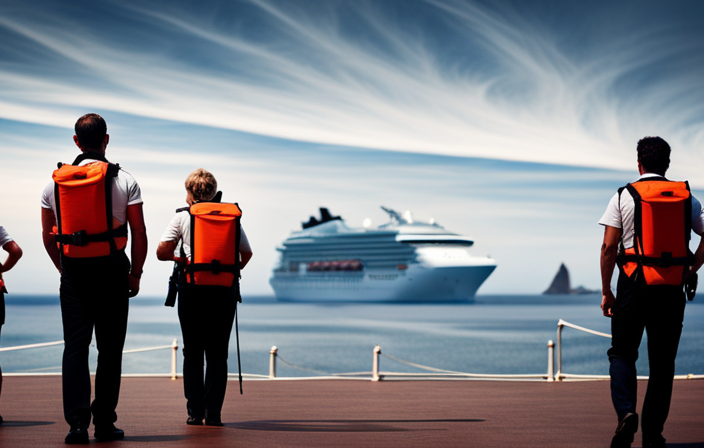
Stepping onto the magnificent cruise ship, I am filled with anticipation and excitement, eagerly looking forward to the upcoming adventure. The staff efficiently and skillfully readies the ship for its journey with synchronized precision.
But amidst the glamour and luxury, there is a crucial aspect that cannot be overlooked – the cruise ship muster drill. This safety briefing is like the foundation of a magnificent structure, ensuring that all passengers are prepared for any unexpected emergencies that may arise during our voyage. It is a vital ritual that every passenger must partake in, regardless of their previous cruising experience.
With two types of drills available – virtual and in-person – the cruise lines have adapted to meet the needs of their guests. From life jacket demonstrations to safety announcements, the muster drill equips us with the knowledge and confidence to navigate through any challenging situation.
So, as we set sail, let us not forget the importance of this essential safety briefing, for it is the compass that guides us towards a safe and enjoyable journey.
Key Takeaways
- The cruise ship muster drill is a required safety briefing that familiarizes passengers with assembly stations and protocols before sail away.
- There are two types of muster drills: virtual muster process where passengers watch safety briefings from smartphones or stateroom TV, and in-person drills where passengers head to designated stations and scan cruise cards for attendance.
- Key components of the muster drill include life jacket demonstrations, safety announcements, and an emergency signal blasted at the end of the drill.
- The muster drill is important because it ensures that passengers know where to go in case of a real emergency and is a result of the SOLAS treaty formed to prevent major incidents at sea. Missing the drill may result in being forced off the ship or denied a refund.
What is it?
The cruise ship muster drill is a required safety briefing that familiarizes passengers with assembly stations and protocols, even for those who’ve cruised before. Its importance can’t be overstated, as it serves a crucial purpose in ensuring the safety of all passengers on board.
The purpose of the muster drill is to educate passengers on what to do and where to go in case of a real emergency at sea. By participating in the drill, passengers are able to familiarize themselves with the location of their assembly station, learn how to properly wear a life jacket, and receive important safety announcements. This knowledge is vital in the event of an actual emergency, as it enables passengers to act quickly and efficiently, potentially saving lives.
Therefore, every passenger, regardless of their cruise experience, must attend the muster drill to ensure the safety and well-being of all on board.
Types of drills
Ironically, there are different methods available for passengers to familiarize themselves with emergency procedures on a cruise ship. Whether it’s through a virtual or in-person drill, the goal remains the same – ensuring passenger safety in the event of an emergency.
Here are four reasons why virtual drills have become increasingly popular:
-
Convenience: Virtual drills allow passengers to access safety briefings from the comfort of their stateroom or even their smartphones, eliminating the need to physically gather at designated stations.
-
Time-saving: With virtual drills, passengers can complete the safety briefing at their own pace, freeing up valuable time during the initial stages of the cruise.
-
Multilingual options: Virtual drills can easily accommodate international guests by offering safety briefings in multiple languages, ensuring everyone understands the emergency procedures.
-
Enhanced engagement: Virtual drills often utilize interactive elements, such as quizzes or videos, making the learning experience more engaging and memorable.
By embracing virtual drills, cruise lines are able to provide a more efficient and engaging safety briefing, ultimately ensuring the well-being of passengers in the event of an emergency.
Key components
Fortunately, the key components of the drill ensure that passengers are well-prepared for emergencies.
One important aspect is the life jacket demonstrations. During the muster drill, crew members demonstrate how to properly wear and secure a life jacket. This ensures that passengers understand the correct procedure in case of an emergency involving water.
Additionally, safety announcements are made to provide important information on emergency procedures and evacuation protocols.
Another factor to consider is the presence of international guests, which may lead to longer drill durations. Since different languages need to be accommodated, it takes more time to ensure that all passengers understand the instructions.
Overall, these key components of the muster drill play a crucial role in educating passengers about safety measures and ensuring their readiness in case of an emergency at sea.
Changes and requirements
Interestingly, amidst the changes and requirements, cruise lines have implemented a virtual format for the muster drill, allowing passengers to familiarize themselves with emergency protocols from the comfort of their own staterooms. This new format has brought about several important changes and requirements for passengers. Here are four key points to consider:
-
Muster drill changes:
- Some cruise lines switched to a virtual format during the pandemic.
- Norwegian ships returned to the e-muster drill format after guest feedback.
- The new format was well-received by guests.
- Most cruise lines don’t plan to revert back to the old system.
-
Muster drill requirements:
- Muster station visit and cruise card scan are still required on board.
- Crew members will track down those who miss the drill.
- Missing the drill may result in being forced off the ship or denied a refund.
- It can be annoying for others if some passengers miss the drill.
These changes and requirements reflect the cruise industry’s commitment to ensuring passenger safety and preparedness in the event of an emergency.
Virtual vs in-person drills
I prefer the convenience and ease of participating in a virtual drill rather than attending an in-person session. Virtual muster drills, offered by various cruise lines, have become increasingly popular among passengers.
There are both pros and cons to this new format. One of the main advantages is that passengers can watch safety briefings from their smartphones or stateroom TVs, allowing for flexibility and privacy. It eliminates the need to gather at a designated assembly station, saving time and reducing congestion. Additionally, virtual drills have been well-received by guests, providing a more comfortable learning environment.
However, some passengers may miss out on the hands-on experience of putting on a life jacket or physically locating their assigned muster station.
Ultimately, passenger preferences play a crucial role in determining the success of virtual versus in-person drills.
Frequently Asked Questions
Are children required to attend the muster drill?
Yes, children are required to attend the muster drill for their own safety and emergency preparedness. It is important for them to be familiar with the protocols and know where to go in case of a real emergency.
Can passengers bring their own life jackets to the muster drill?
Passengers may bring their own life jackets to the muster drill, but it is important to follow the cruise line’s life jacket regulations. These regulations ensure that all life jackets meet safety standards and are properly inspected.
What happens if a passenger misses the muster drill?
Missing the muster drill can lead to dire consequences. Safety measures are in place for a reason, and passengers who neglect them may face being forced off the ship or denied a refund.
How long does the muster drill typically last?
The duration of the muster drill varies depending on the cruise line and ship, but it typically lasts around 30 minutes. It is an important safety briefing that familiarizes passengers with emergency procedures and their assembly station.
Can passengers opt out of attending the muster drill?
Passengers cannot opt out of attending the muster drill, as it is a mandatory safety briefing for all passengers. However, there are safety exemptions and muster drill alternatives, such as virtual drills, offered by some cruise lines.
Alfons is the visionary leader and driving force behind Voyager Info’s success. As the Editor in Chief, he brings a wealth of experience and an unwavering passion for travel to the helm of our cruise-centric platform.
With a lifelong fascination for exploring new horizons, Alfons discovered his love for the ocean and cruising at a young age. From sailing across pristine Caribbean waters to embarking on daring expeditions to far-flung destinations, he has amassed a treasure trove of first-hand experiences in the world of cruising.
Onboard Experience
Are Cruises Worth The Convenience And Value?

From the deck of the cruise ship, looking out at the immense ocean, I am struck by the convenience and worth offered by cruising. It seems like a mobile sanctuary, where only having to unpack once allows you to visit numerous destinations without the stress of constant moving.
The all-inclusive package, from lodging to food and entertainment, ensures that every need is taken care of. And the best part? It can be more affordable than traditional vacations, with prices as low as $40-$50 per day.
But are cruises truly worth it? That’s the question I aim to answer in this article. We’ll delve into the benefits and experiences that make cruises so appealing, as well as the cost and value they provide. We’ll also explore the downsides and limitations to consider.
So join me as we embark on this journey to determine if cruises are truly worth the convenience and value they promise.
Key Takeaways
- Cruises offer the convenience of unpacking once and visiting multiple destinations, making it a hassle-free vacation option.
- Cruises provide excellent value for money, with all-inclusive fares that cover lodging, transportation, food, entertainment, and activities.
- The onboard experience on cruises is top-notch, with high-quality food and a wide variety of entertainment options, including Broadway musicals and ice skating performances.
- However, there are some downsides and limitations to consider, such as the possibility of motion sickness, limited time in port for deep immersion in a city’s culture, and additional charges for tours, internet access, and alcohol.
Are cruises worth it?
I think cruises are definitely worth it because they offer convenience, value, and a variety of onboard experiences.
When it comes to convenience, one of the biggest advantages of cruising is the ability to unpack once and visit multiple destinations. It’s like having a floating resort that takes you to different places.
In terms of value, cruises can be quite cost-efficient, with fares typically including lodging, transportation, food, entertainment, and activities. However, it’s important to consider the drawbacks and limitations. Some people may experience motion sickness due to choppy seas, and the limited time in port may not allow for deep immersion in a city’s culture. Additionally, there may be additional charges for things like alcohol, internet access, and shore excursions.
Despite these limitations, the cruise ship amenities and the overall experience make cruises worth considering for a convenient and value-packed vacation.
Benefits and Experiences
Imagine exploring a new city each day, immersing yourself in different cultures, and indulging in a variety of world-class entertainment and cuisine, all while unpacking just once and effortlessly gliding through stunning ocean views. Cruising offers a unique and convenient way to experience multiple destinations while enjoying the comforts of a floating resort. The benefits of cruising include the convenience of unpacking once and visiting multiple destinations, the opportunity to see different countries and cities, and the cost-efficiency of having lodging, transportation, food, entertainment, and activities included in the cruise fare. However, there are downsides to consider, such as potential motion sickness, limited time in port, and additional expenses for tours, internet, and alcohol. To help you weigh the pros and cons of cruising, here is a handy table:
| Pros of Cruising | Cons of Cruising |
|---|---|
| Convenience of unpacking once | Potential motion sickness |
| Opportunity to visit multiple destinations | Limited time in port |
| Cost-efficient way to travel | Additional expenses for tours, internet, and alcohol |
| All-inclusive fares | Adherence to the cruise ship’s schedule |
By considering these factors, you can determine if the convenience and value of cruising align with your travel preferences and priorities.
Cost and Affordability
When considering the cost of a vacation, it’s important to note that cruises can be a more affordable option compared to all-inclusive resorts. While all-inclusive resorts offer a luxurious experience, they often come with a higher price tag.
On the other hand, cruises provide budget-friendly options and deals that make them an attractive choice for travelers looking to maximize their vacation budget. Cruise fares typically include lodging, transportation, food, entertainment, and activities, making them a cost-efficient way to explore multiple destinations. With prices as low as $40-$50 per day, including all essentials, cruises offer great value for your money. This makes it easier to plan and stick to a budget, without worrying about additional expenses adding up.
Moreover, cruises offer the convenience of unpacking once and visiting multiple destinations, allowing you to experience different cultures and see several countries and cities in one trip. This convenience, combined with the affordability, makes cruises a worthwhile option for those seeking a memorable and budget-friendly vacation.
Frequently Asked Questions
What are the safety measures taken on cruises to ensure the well-being of passengers?
Safety protocols and health measures on cruises are comprehensive. They include regular temperature checks, enhanced sanitation practices, social distancing measures, mandatory mask-wearing, and pre-boarding health screenings to ensure the well-being of passengers.
Are there any age restrictions for certain activities or amenities on the cruise ship?
Age restrictions vary for different activities and amenities on cruise ships. While some activities like casinos and bars have age restrictions, there are usually plenty of options available for all age groups to enjoy their vacation.
Can I bring my own alcohol or beverages onboard?
Yes, you can bring your own alcohol or beverages onboard, but there may be restrictions and fees. It’s important to check with the cruise line beforehand. If prohibited, there are alternative onboard activities to enjoy.
How do I handle medical emergencies while on a cruise?
Handling medical emergencies on a cruise is crucial. Ships have medical facilities with trained staff to provide assistance. They can handle common illnesses and injuries, but serious cases may require evacuation to a nearby hospital.
What are the environmental impacts of cruising and how do cruise lines address sustainability issues?
Cruise lines are increasingly aware of the environmental impacts of cruising and have implemented various sustainable practices. They adhere to environmental regulations, invest in eco-friendly technologies, reduce waste, and promote conservation efforts to minimize their ecological footprint.
Alfons is the visionary leader and driving force behind Voyager Info’s success. As the Editor in Chief, he brings a wealth of experience and an unwavering passion for travel to the helm of our cruise-centric platform.
With a lifelong fascination for exploring new horizons, Alfons discovered his love for the ocean and cruising at a young age. From sailing across pristine Caribbean waters to embarking on daring expeditions to far-flung destinations, he has amassed a treasure trove of first-hand experiences in the world of cruising.
-

 Cruise FAQs3 days ago
Cruise FAQs3 days agoHow To Turn On Cruise Control Tesla Model 3
-

 Cruise FAQs3 months ago
Cruise FAQs3 months agoWhat Is The Weather Like On A Transatlantic Cruise In April
-

 Cruise FAQs3 days ago
Cruise FAQs3 days agoHow To Set Cruise Control Tesla Model Y
-
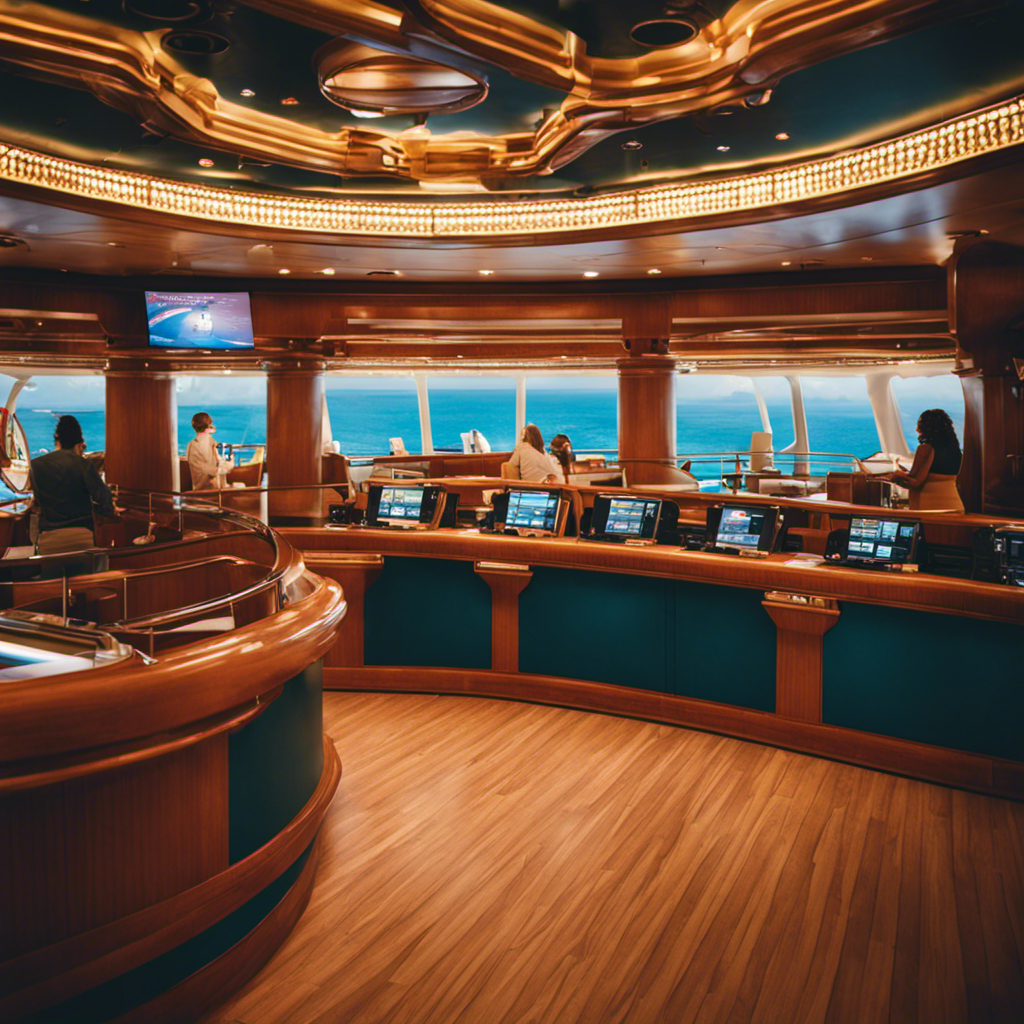
 Cruise FAQs3 months ago
Cruise FAQs3 months agoHow to Contact Someone on a Carnival Cruise Ship
-
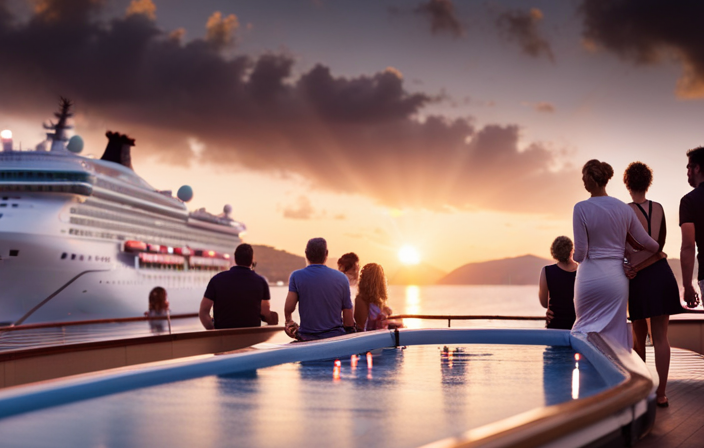
 Cruise Lines3 months ago
Cruise Lines3 months agoWhat Is The Average Age Of Passengers By Cruise Line
-

 Onboard Experience1 week ago
Onboard Experience1 week agoFinding Deals On Unsold Cruise Cabins: Tips And Strategies
-
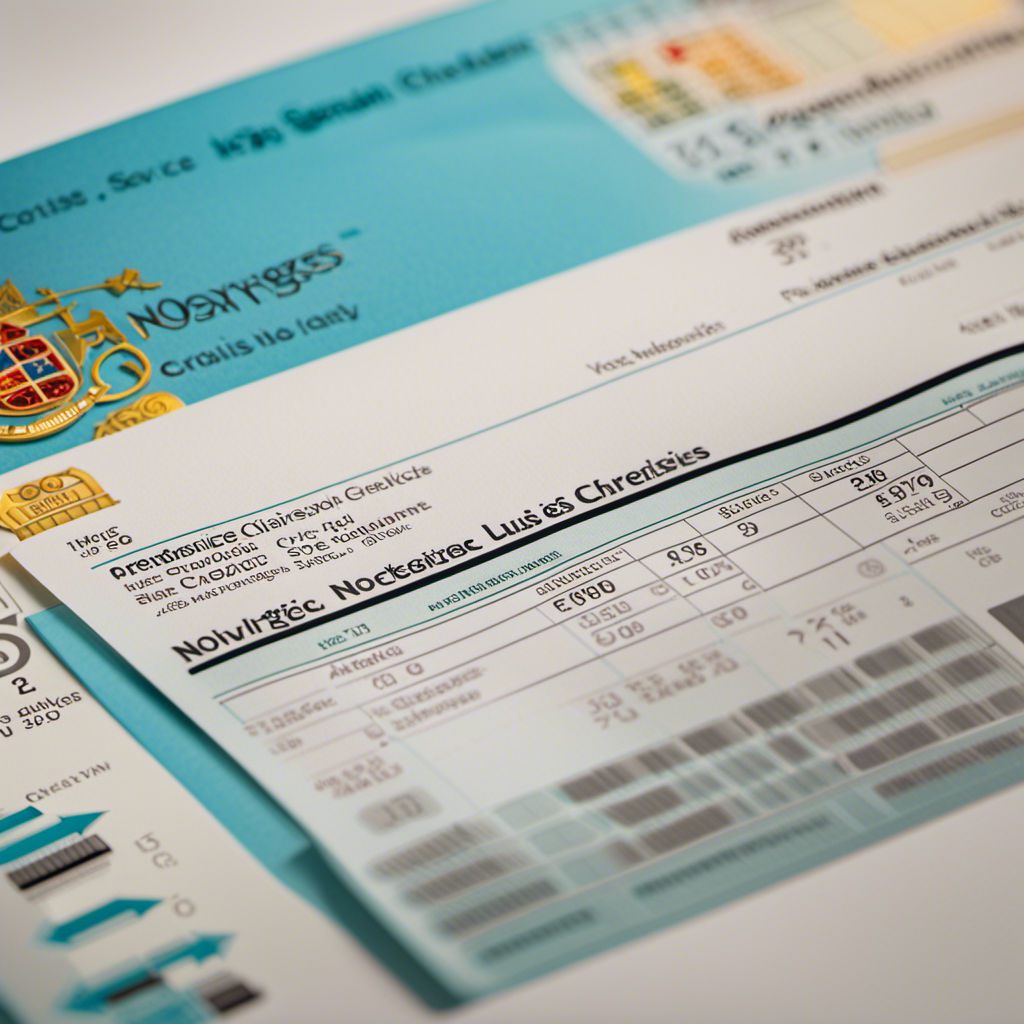
 Cruise Lines3 months ago
Cruise Lines3 months agoDecoding Norwegian Cruise Line’s Gratuities and Service Charges
-
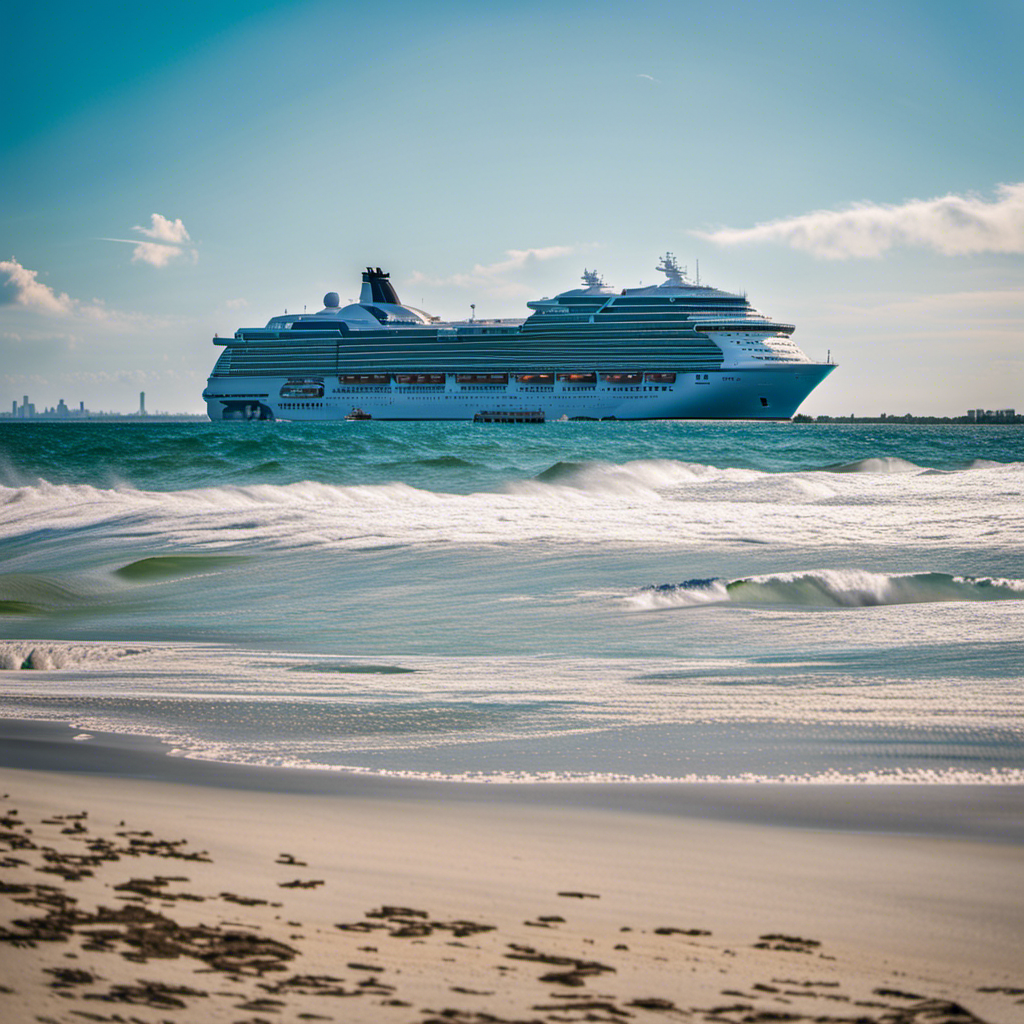
 Cruise Lines3 months ago
Cruise Lines3 months agoWhat Cruise Lines Depart From North Carolina







